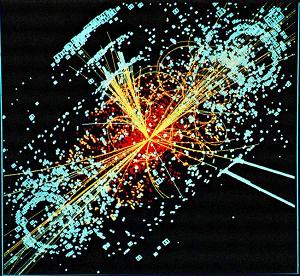In their effort to reach a greater understanding of the fundamental composition of matter, scientists resort to one of the most basic, primal techniques available: to determine what something is made of, rip it apart and observe what's inside. Building on this idea led to the development of particle accelerators and detectors. Accelerators use electric and magnetic fields to give particles enough energy so that when they collide with other particles, they decompose into their composite parts, or create new parts altogether. Detectors perform the function of "seeing" these parts, since they are sub-microscopic.
To see how this physics is applied to specific accelerators, like the linac and synchrotron, check out the tabs above.

